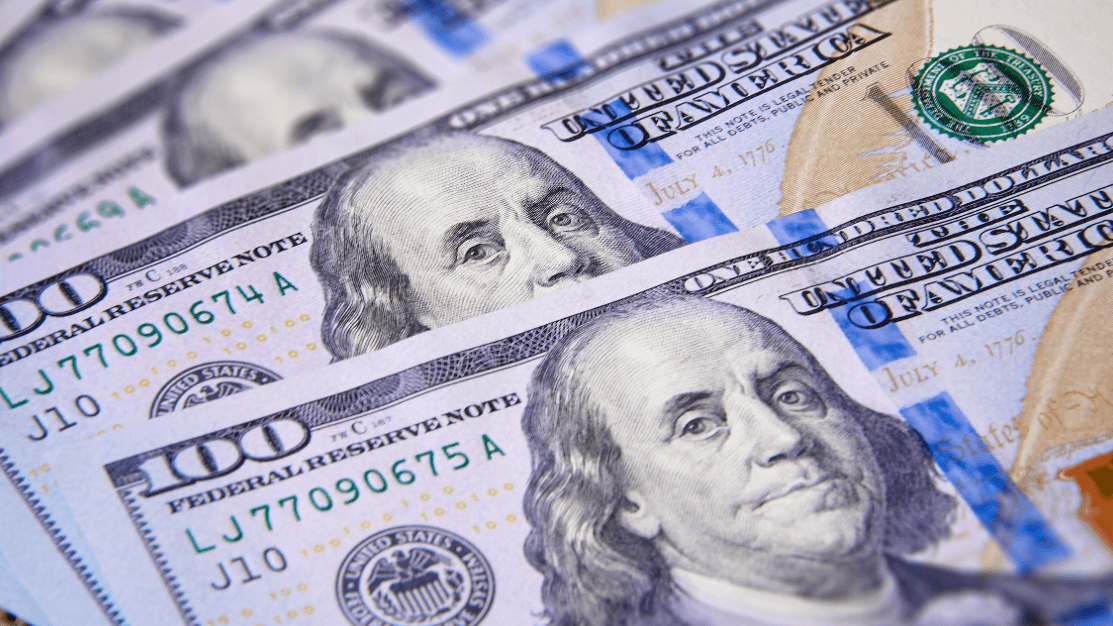If you are traveling or studying abroad, you must pay attention to the USDX, knowing that once it rises, the value of our money will depreciate in relative terms. If you're not careful, your tuition will go up and your wallet will be deflated. So what is the USDX?
 What is the meaning of the US Dollar Index?
What is the meaning of the US Dollar Index?
Its full English name is US Dollar Index, or USDX, which is a measure of the dollar relative to a basket of other major currencies. Exchange rate changes in the index. This basket usually includes the euro, the yen, the pound, the Canadian dollar, the Swedish krona, and the Swiss franc, six major international currencies.
After the collapse of the Brenton Woods system in March 1973. the exchange rate between the currencies of various countries went from being completely fixed to being able to float according to the market. The foreign exchange market has since become the world's largest financial market. And with the dollar as the strongest currency, its movement is the most concerning to traders, so the USDX came into being. Its purpose is to provide a measure of the strength of the dollar and the stability of the standard.
It was originally published by the New York Cotton Exchange (NYCE), but in 2006 it was merged into the American Intercontinental Exchange, which now publishes real-time data on the index.
To commemorate a historic moment in the turnaround of the foreign exchange market, the USDX in March 1973 was set at 100 as a reference point to measure the value of the dollar. For example, an index of 110 would indicate that the value of the dollar has risen by 10% since March 1973.
In the specific calculation of the USDX, different currencies are weighted differently. The Japanese yen accounts for 13.6%, the British pound 11.9%, the Canadian dollar 9.1%, the Swedish krona 4.2%, the Swiss franc 3.6%, and the euro has the largest share at 57.6%. Therefore, the fluctuation of the euro has the most significant impact on the index.
In the international foreign exchange market, the index can be used as a key indicator to determine the direction of the dollar. Generally speaking, the rise of the dollar index means dollar appreciation, and the fall means dollar depreciation. It will also indirectly affect the Precious metals market, the dollar, and gold, although they are the most important reserve assets. But a mountain can't tolerate two tigers, and the strong dollar will weaken the status of gold as a reserve asset. So generally speaking, the USDX will be inversely proportional to the price of gold.
Its importance as a bellwether for the US dollar is unquestionable. Investors and analysts often use this index to analyze the overall strength of the US dollar in order to make Currency Trading and investment decisions. This indicator can also influence international trade and financial markets, as the US dollar is one of the world's most important reserve currencies, and its exchange rate has a significant impact on international trade and the price of financial assets.
Composition of the US dollar index
| Currencies |
Coding |
Weight (%) |
| Euro |
EUR |
57.60% |
| Japanese Yen |
JPY |
13.60% |
| British Pound |
GBP |
11.90% |
| Canadian Dollar |
CAD |
9.10% |
| Swedish Krona |
SEK |
4.20% |
| Swiss Franc |
CHF |
3.60% |
What does a rise mean?
When the USDX rises, it reflects an increase in the value of the U.S. dollar in the international currency market. The implications of this are:
First of all, it shows that the US dollar has gained strength relative to other major currencies. It also means that the market has more confidence in the dollar as a relatively safe and attractive investment option.
Secondly, it's probably related to US monetary policy. If the Federal Reserve adopts a tight monetary policy, such as raising interest rates or reducing the money supply, this could lead to an appreciation of the US dollar, which could further boost the index.
In addition, the rise in the Change Index may also reflect the trend of international capital flows to the United States. When investors seek higher investment returns or risk aversion, they may opt for the US dollar, allowing it to strengthen.
However, a strong dollar may negatively impact U.S. exports. As the dollar strengthens, U.S. products may become more expensive in the international marketplace and, as a result, reduce the competitiveness of U.S. products for export.
At times, a rising USDX may also reflect market concerns about deflation or the risk of deflation. This is because a strong dollar may make imported goods less expensive, which in turn has the risk of increasing deflation.
So it is important to note that its rise is not necessarily a positive influence. It may also have a negative impact on some aspects of the United States economy, such as exports and deflation risk.
What does a decline mean?
When the USDX goes down, it usually means that the value of the US dollar has decreased in the international currency markets. This can have certain implications, for example:
Firstly, a fall in the index indicates a weakening of the US dollar relative to other major currencies. This can cause the market to have less confidence in the dollar as it is no longer a relatively safe and attractive investment option.
Secondly, the fall in the USDX could be related to US monetary policy. If the Fed adopts an accommodative monetary policy, such as lowering interest rates or increasing the money supply, this could lead to a depreciation of the US dollar, which could lower that dollar index.
In addition, it reflects international capital outflows from the United States. When investors seek higher returns or risk aversion, they may choose other currencies or assets.
As a result of the depreciation of the dollar, U.S. products may become more competitive in the international marketplace and more attractively priced, thus helping U.S. exports. However, the same depreciation of the dollar may lead to higher prices of imported goods, thus increasing the risk of inflation, so it may also reflect market concerns about inflation.
Of course, not all of its effects are necessarily negative; it can also boost exports and help boost the economy in some cases.
What the rise and fall of the us dollar index represents
| USDX |
significance |
Impact |
| Up |
Dollar Appreciation |
U.S. dollar strength and capital flows dampen exports, signaling deflation concerns. |
| Down |
Dollar depreciation |
Declining dollar, capital exports raise deflation risk, aid exports, boost economy. |
Relationship with U.S. Stocks
There is a definite correlation between the two in the financial markets. While this relationship is complex and influenced by a number of factors, the following points are of interest:
First, changes in the index can have an impact on the U.S. stock market, especially on multinational corporations. When the U.S. dollar strengthens, U.S. exporters may be adversely affected because it makes their products relatively more expensive in the international marketplace, which reduces sales. This can put pressure on the revenues and earnings of publicly traded companies, which in turn can negatively affect stock prices.
Secondly, the strength of the US dollar also affects industries related to raw materials, such as energy, metals, and agricultural products. Typically, when the dollar strengthens, the price of raw materials may fall because these commodities are usually denominated in dollars. This can have a negative impact on stocks in related industries.
In addition, the U.S. dollar is sometimes viewed as a safe-haven asset in times of unstable market sentiment. When investors buy dollars, this causes the dollar to appreciate. At this point, a rise in the index may be accompanied by a fall in the stock market, as funds will flow from the stock market to the US dollar.
From the perspective of interest rate policy, the movement of the dollar index is closely related to the monetary policy of the U.S. Federal Reserve System (Fed). If the Fed raises interest rates, this usually leads to an appreciation of the dollar, which could put some negative pressure on the stock market. This is because high interest rates may increase the cost of financing and reduce the earnings potential of companies.
Disclaimer: This material is for general information purposes only and is not intended as (and should not be considered to be) financial, investment, or other advice on which reliance should be placed. No opinion given in the material constitutes a recommendation by EBC or the author that any particular investment, security, transaction, or investment strategy is suitable for any specific person.


 What is the meaning of the US Dollar Index?
What is the meaning of the US Dollar Index?



